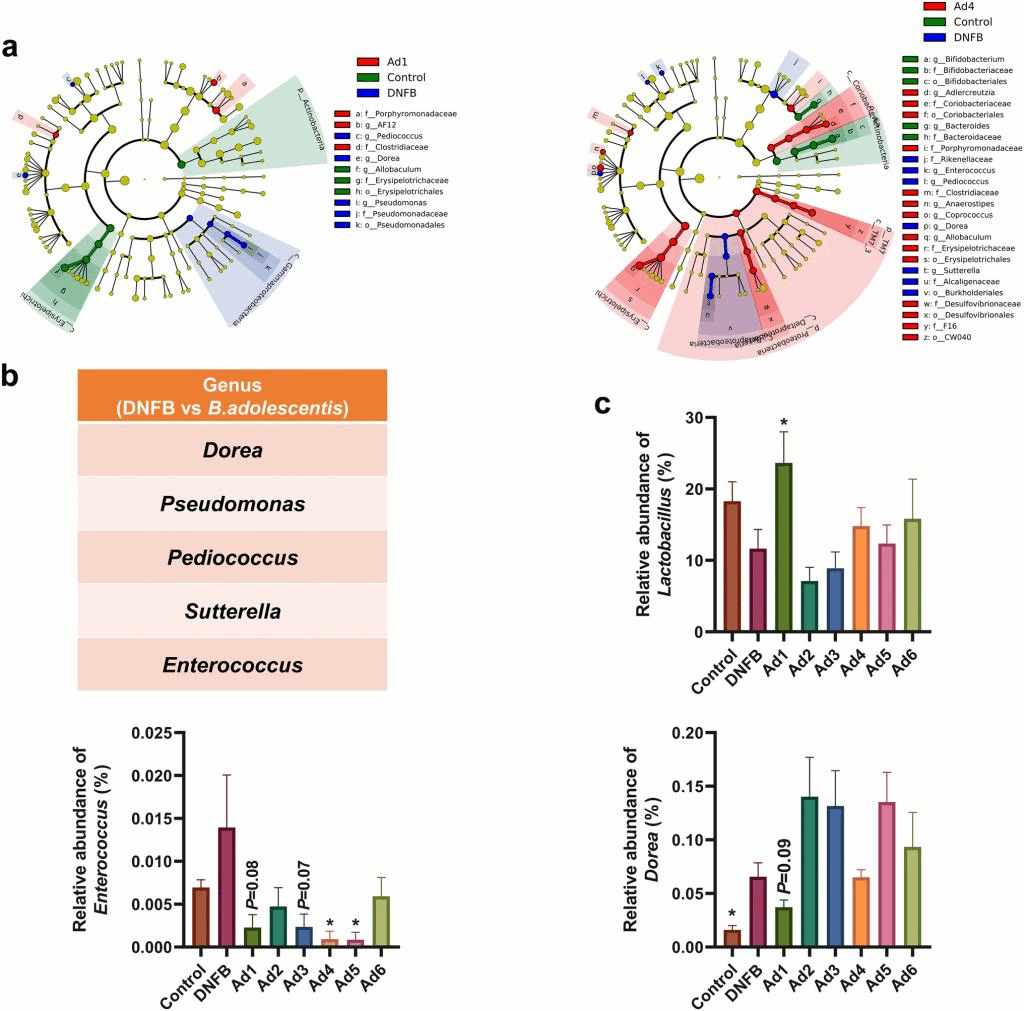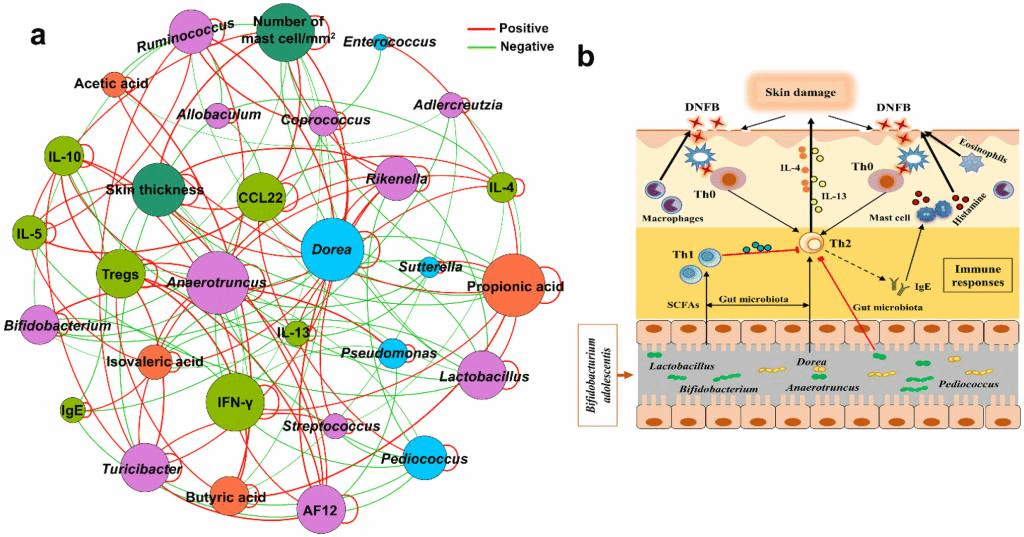Bifidobacteria adolescentis regulated immune responses and gut microbial composition to alleviate DNFB-induced atopic dermatitis in mice
Journal: European Journal of Nutrition
Abstract:
Purpose
Emerging studies have reported gut microbial composition plays a key role in alleviating AD clinical symptoms during the probiotic intervention, but the correlation among clinical symptoms, immune responses and gut microbial alteration needs to be explored. Therefore, the objective was to investigate the correlation during Bifidobacterium adolescentis intervention in DNFB-induced AD mice.
Methods
The mice were randomly divided into nine groups and fed B. adolescentis for 3 weeks. At the end of the experiment, clinical and immune indicators were assessed. Flow cytometry was performed to explore the effect of B. adolescentis on regulatory T cells in the spleen. V3–V4 region of the 16S ribosomal RNA (rRNA) gene was sequenced to evaluate changes in the gut microbiota.
Results
Bifidobacteria adolescentis treatments reduced ear and skin thickness and suppressed eosinophils and mast cells infiltration. Th1- and Th2-type responses were regulated and the Tregs population was promoted in the spleen by B. adolescentis treatments. Bifidobacteria adolescentis increased the relative abundance of Lactobacillus but decrease Dorea and Pediococcus. Propionic and butyric acids were increased but isovaleric acid was decreased by B. adolescentis treatment. Besides, the functional modules, such as fatty acid biosynthesis, antigen processing and presentation were upregulated by B. adolescentis Ad1 treatment compared to the DNFB group.
Conclusion
Collectively, these results imply that B. adolescentis with the role of immunomodulation promotes Treg differentiation and suppresses Th2 responses, and increases the proportion of Lactobacillus that is positively correlated to increase in propionic acid production, and thus has the potential for AD amelioration.
Figures:


【作者提要】
特应性皮炎是一种瘙痒性,复发性,以及炎症性皮肤病。在近30年里,特应性皮炎在全世界范围内的患病率逐渐上升,影响了15-30%的儿童和3%的成年人。研究表明,特应性皮炎的发生与肠道菌群变化具有密切的联系,我们通过利用特定的益生菌(青春双歧杆菌)靶向肠道菌群,降低小鼠皮肤组织Th2型细胞因子IL-4和IL-13的分泌,同时有助于上调Th1型免疫反应,恢复Th1/Th2免疫应答反应的平衡。青春双歧杆菌还可抑制炎症细胞的浸润,缓解小鼠皮肤病理症状。此外,青春双歧杆菌可增加小鼠肠道有益菌乳酸杆菌的相对丰度,降低有害菌属Dorea 和Pediococcus的相对丰度,调节肠道菌群基因功能通路。这些结果表明,青春双歧杆菌具有缓解特应性皮炎的潜力,但相关发现是否适用于临床患者,期待进一步的验证。
Authors:
Zhifeng Fang 1,2, Lingzhi Li 1,2, Jianxian Zhao 1,2,5, Hao Zhang 1,2,3,4,5, Yuan-kun Lee 6, Wenwei Lu 1,2,3,5,* and Wei Chen 1,2,3,7
1 State Key Laboratory of Food Science and Technology, Jiangnan University, Wuxi, Jiangsu 214122, China.
2 School of Food Science and Technology, Jiangnan University, Wuxi, Jiangsu 214122, China
3 National Engineering Research Center for Functional Food, Jiangnan University, Wuxi, Jiangsu 214122, China
4 Wuxi Translational Medicine Research Center and Jiangsu Translational Medicine Research Institute Wuxi Branch, Wuxi, Jiangsu 214122, China
5 (Yangzhou) Institute of Food Biotechnology, Jiangnan University, Yangzhou 225004, China
6 Department of Microbiology, Yong Loo Lin School of Medicine, National University of Singapore, Singapore
7 Beijing Innovation Centre of Food Nutrition and Human Health, Beijing Technology and Business University (BTBU), Beijing 100048, China
DOI:https://doi.org/10.1007/s00394-019-02145-8
Published:2019-11-30
 current location:
ICPG
>
Publications
>
Content
current location:
ICPG
>
Publications
>
Content